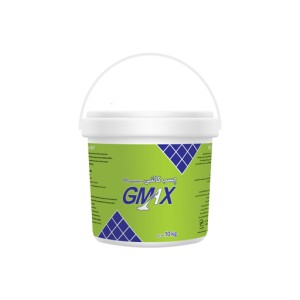

GMAX Tile adhesive
Why Choose Tile Adhesive Over Traditional Mortar?
In the past, tile installation relied on a mixture of stone powder and cement, commonly known as traditional mortar. However, this method is now outdated due to its heavy material consumption and space limitations. Today, ready-to-use tile adhesives have become the preferred choice for installing tiles and ceramics on floors and walls.
One of the most widely used options is paste tile adhesive, formulated with acrylic resins, mineral powders, and thickening agents. This advanced adhesive offers numerous benefits, including:
✅ Faster tile installation for improved efficiency
✅ Reduced material weight, making construction lighter
✅ Maximized interior space, as the adhesive layer is only 4 to 5 millimeters thick
Unlike traditional mortar, which required 4 to 5 centimeters of space behind tiles, paste tile adhesive eliminates unnecessary bulk while ensuring a strong and lasting bond. Upgrade your tiling process with GMAX Tile Adhesive—a modern solution for durability, efficiency, and superior results.
technical specifications
|
state of |
Dispersion |
|
Color |
Milky |
|
Ion chlorine |
no |
|
Gross weight |
10 kg |
product usage
Versatile Applications of GMAX Tile Adhesive
- Perfect for ceramic tile installation on both walls and floors
- Strong adhesion for natural stones on horizontal and vertical surfaces
- Large-scale application – allows gluing multiple tiles in a single step
- Ideal for artificial stone installation with a durable bond
- Highly resistant to moisture, making it perfect for bathrooms and wet areas
- Reliable for stairs and corridors, ensuring long-lasting adhesion
- Compatible with asbestos sheets and specialized surfaces
- Works on concrete, gypsum, and stone for versatile applications
- Withstands structural movement, including tension, expansion, and contraction
how to maintain
Storage Conditions for GMAX Tile Adhesive
To maintain the quality and performance of GMAX Tile Adhesive, follow these storage guidelines:
✔ Keep away from extreme conditions – Avoid exposure to cold, frost, excessive heat, and direct sunlight.
✔ Optimal storage temperature: +10°C to +30°C for best consistency and effectiveness.
✔ Store in a dry and well-ventilated area to prevent moisture damage.
How to use
Application Guide for GMAX Dispersion Tile Glue
For a strong, durable, and long-lasting bond, proper surface preparation and application of GMAX Dispersion Tile Glue are essential. Follow these steps to ensure a flawless tile installation with GMAX Glue.
🔹 Surface Preparation for GMAX Dispersion Tile Glue
To achieve maximum adhesion, the surface must be:
✔ Clean and free from dust, grease, oil, and loose particles.
✔ Dry and structurally stable to prevent weak bonding.
✔ If necessary, clean the surface with a water jet or sandblasting to remove contaminants.
Surface-Specific Preparation:
✅ Plaster & Gypsum Surfaces:
- Apply a primer layer (diluted concrete adhesive or acrylic primer) before applying GMAX Glue.
✅ Painted Walls:
- Remove loose or peeling paint and sand the surface to create a rough texture for better adhesion.
- Apply a bonding primer before gluing.
✅ Concrete & Cement Surfaces:
- Apply a primer coat for better bonding and to reduce water absorption.
✅ Old Tiles & Smooth Surfaces:
- Degrease and clean thoroughly.
- Roughen glossy surfaces by sanding or etching.
- Apply a bonding primer, then spread GMAX Dispersion Tile Glue.
🔹 How to Apply GMAX Dispersion Tile Glue
1️⃣ Apply the Adhesive:
- Use a notched trowel to spread GMAX Glue evenly.
- Ensure a uniform layer with 3-5 mm thickness, depending on the tile type.
2️⃣ Tile Installation:
- Place tiles on the adhesive within 10-15 minutes before it starts to dry.
- Press tiles firmly for maximum contact.
- Ensure at least 60% coverage on the tile’s backside for a secure bond.
3️⃣ Alignment & Adjustments:
- Use tile spacers to maintain even gaps.
- Make adjustments within 15 minutes before the adhesive sets.
4️⃣ Curing & Drying Time:
- Final strength is reached in 48 hours.
- Grouting can begin after 24-48 hours, depending on temperature and humidity.
- The surface is ready for light use after 2 days and full load after 7 days.
🔹 Additional Tips for Best Performance
✅ Avoid exposure to water, frost, or excessive heat during curing.
✅ Store GMAX Glue at +10°C to +30°C, away from direct sunlight.
✅ Not recommended for permanently wet areas like swimming pools.

